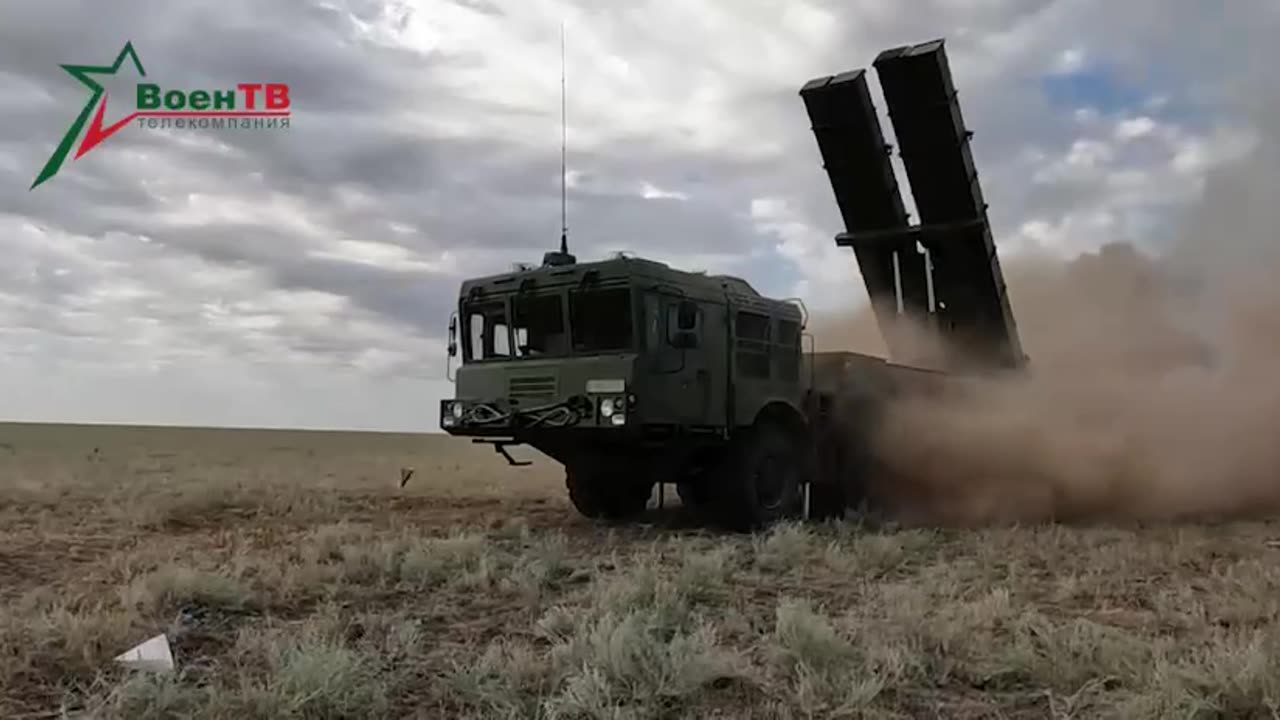Premium Only Content

Unique technical details
Unique technical details are captured on video while filming the exercises of the crew of the B-300 Polonez-M dual-caliber MLRS of the Missile and Artillery Forces of Belarus, practicing striking a simulated enemy target at a distance of 300 km.
In addition to demonstrating the batch reloading of twin transport and launch containers with 301mm A200 guided projectiles, which is carried out 4-6 times faster than the sequential reloading of the 9M544/549 missiles in the guides of the Tornado-S MLRS, we can see the aerodynamic layout of the maneuvering combat stage of the improved 2-stage 301mm A200 guided rocket.
This stage has a "lifting body" configuration with all-moving tail aerodynamic rudders, which ensure anti-aircraft maneuvers with overloads of up to 30G at speeds in a 90 degree dive mode of about 4-2.3 M (depending on the distance to the target).
For better lifting qualities, implementation of the gliding effect and greater static stability, this stage is equipped with additional low-elongation wings with a developed chord, located behind the center of mass of the missile. The layout of this combat stage is similar to the layout of the MIM-104F PAC-3MSE SAM interceptor and, remarkably, in the future it can be additionally equipped with an active-passive radar homing head, ensuring the detection and capture of radio-emitting and radio-contrast targets, including enemy ground radars, launchers, as well as air targets, including AWACS aircraft and tactical aviation.
In other words, the aerodynamic configuration of the combat stage of the missile A200 assumes its multifunctional use, from striking ground targets to solving anti-radar and air defense/missile defense task
Like and subscribe to the channel fernballan
-
 UPCOMING
UPCOMING
Nerdrotic
32 minutes agoHollywood's Final Reckoning, Mission Impossible 8 REVIEW, Doomsday DELAYED | Friday Night Tights 355
-
 LIVE
LIVE
Dr Disrespect
4 hours ago🔴LIVE - DR DISRESPECT - WARZONE - 3 SOLO WINS IN 5 HRS!
12,428 watching -
 LIVE
LIVE
StoneMountain64
2 hours agoRoadcraft Gameplay & 1st Impressions - FAST Crew Goes Blue Collar
451 watching -
 2:02:55
2:02:55
The Quartering
3 hours agoTrump Goes NUCLEAR On Woke University,, Major Data Breach, Black Fatigue & OnlyF*ns DONE
123K41 -
 LIVE
LIVE
Barry Cunningham
3 hours agoTRUMP DAILY BRIEFING: MORE EXECUTIVE ORDERS AND A LOT MORE NEWS!
2,335 watching -
 UPCOMING
UPCOMING
Badlands Media
10 hours agoMAHA News Ep. 43
7.06K -
 UPCOMING
UPCOMING
RRA1999
9 hours agoReality Based: System Crash; Episode 1: Rumble Debut
157 -
 LIVE
LIVE
Jeff Ahern
1 hour ago $0.44 earnedFriday Freak out with Jeff Ahern
212 watching -

Crypto Power Hour
3 hours ago $0.11 earnedSelf-Custody vs. Centralized Crypto Cards — Freedom or Convenience
3.27K3 -
 17:14
17:14
Breaking Points
1 day agoTrump Admin CAUGHT Faking Gang Invasion
34.7K73